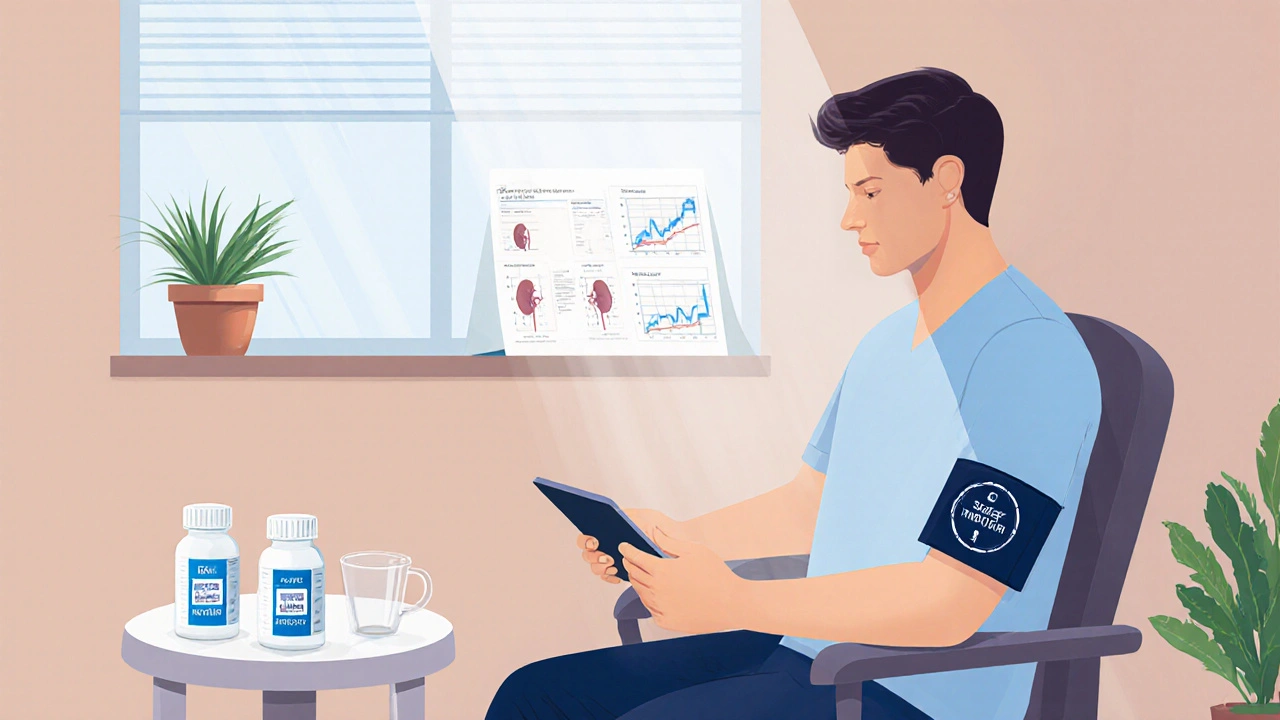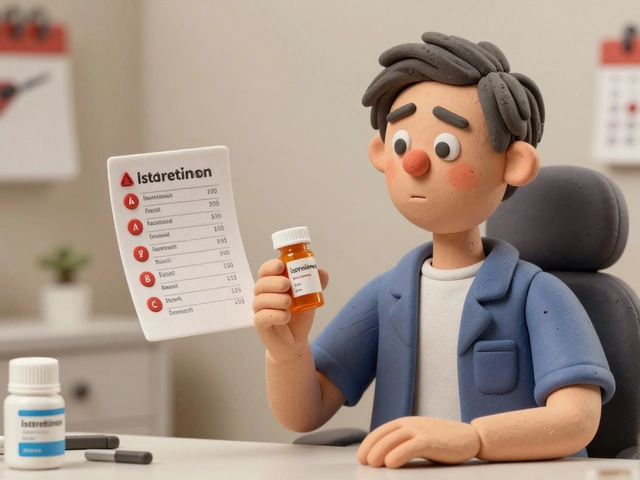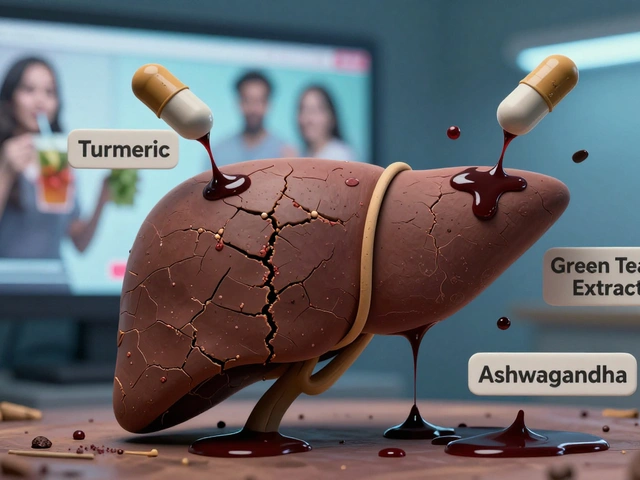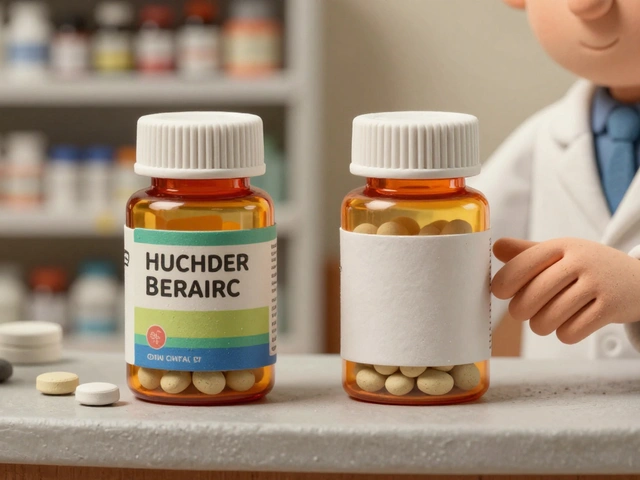Diabetes & Kidney Health Risk Calculator
Risk Assessment Inputs
Please provide your current health information to assess your risk of developing diabetic kidney disease.
Your Risk Assessment
When Diabetes is a chronic condition characterized by high blood glucose levels, it can set off a chain reaction that harms many organs. One of the most serious complications is Renal Failure a stage of chronic kidney disease where the kidneys can no longer filter waste effectively, often requiring dialysis or transplant. Understanding how these two health issues intersect is the first step toward stopping the damage before it becomes irreversible.
Why Diabetes Puts Your Kidneys at Risk
Diabetic nephropathy, the medical term for kidney disease caused by diabetes, begins with tiny filters called glomeruli. Over time, excess glucose damages the delicate blood vessels in these filters, leading to scar tissue and reduced filtration ability. This process is often silent; most patients don’t notice symptoms until the disease is advanced.
Key Risk Factors You Can Track
Three main culprits accelerate kidney damage in people with diabetes:
- Persistently high blood sugar, measured by HbA1c a lab test that reflects average glucose over the past two to three months. Values above 7% markedly increase risk.
- Hypertension, because elevated blood pressure forces the kidneys to work harder, worsening filter wear.
- Protein leakage, detected as Albuminuria the presence of albumin in urine, an early sign of glomerular damage.
By monitoring these factors, you can intervene early and keep the disease in check.
Screening: How to Spot Trouble Early
Regular kidney function tests are essential. The two most informative measures are:
- Glomerular Filtration Rate (GFR) an estimate of how much blood the kidneys filter each minute, expressed in mL/min/1.73m². A GFR below 60 indicates moderate to severe kidney damage.
- Urine albumin‑to‑creatinine ratio (UACR), which quantifies albuminuria and helps stage diabetic nephropathy.
Guidelines suggest at least annual testing for anyone with type 1 diabetes of five years’ duration or type 2 diabetes of any duration.

Prevention Strategies That Really Work
Prevention hinges on three pillars: blood sugar control, blood pressure management, and kidney‑protective medications.
Blood Sugar Control Managing glucose tightly reduces the load on kidney filters. Modern insulin regimens, continuous glucose monitors, and newer oral agents make this easier than ever.
Blood Pressure Management Keeping systolic pressure under 130mmHg cuts the risk of progression. Lifestyle tweaks plus medication are key.
Kidney‑Protective Medications Two drug classes have strong evidence for slowing diabetic kidney disease:
- ACE Inhibitors medications that relax blood vessels and reduce protein loss in urine (e.g., lisinopril, enalapril).
- SGLT2 Inhibitors agents that lower glucose by prompting kidneys to excrete it, also lowering GFR decline (e.g., empagliflozin, dapagliflozin).
Starting these drugs early, even before overt kidney disease appears, can halve the risk of dialysis.
Lifestyle Changes That Support Kidney Health
Diet and activity play a big role. Here’s a quick cheat‑sheet:
- Limit sodium to under 2,300mg per day to ease blood pressure.
- Choose low‑protein, plant‑based meals if your GFR drops below 45mL/min, reducing waste buildup.
- Stay hydrated but avoid excessive fluids if you’re already on dialysis.
- Exercise regularly-moderate aerobic activity for 150minutes a week improves insulin sensitivity.
These tweaks can lower both glucose spikes and blood pressure swings, giving your kidneys a break.
Managing Early‑Stage Kidney Disease
If screenings reveal a GFR between 60-90mL/min or micro‑albuminuria, the goal is to halt further loss. A typical management plan looks like this:
- Intensify glucose control (target HbA1c<7%).
- Start an ACE inhibitor or ARB, even if blood pressure is normal.
- Consider adding an SGLT2 inhibitor for added renal protection.
- Schedule follow‑up labs every three to six months to track trends.
- Provide nutrition counseling focused on sodium and protein intake.
Patients who adhere to this regimen often maintain a stable GFR for many years.
What Happens When Kidney Function Declines Further?
Once GFR falls below 30mL/min, options narrow:
- Dialysis - either hemodialysis (in‑center) or peritoneal dialysis (home‑based). Both remove waste but require strict scheduling.
- Kidney Transplant - offers the best quality‑of‑life improvement; eligibility depends on overall health and donor match.
- Emerging Therapies - research into cellular regeneration and bio‑artificial kidneys shows promise, but remains experimental.
Even at this stage, controlling blood sugar and blood pressure still matters, as it can reduce complications and improve transplant outcomes.

Empowering Yourself: Tools and Resources
Technology can make monitoring less painful. Smartphone apps now sync with glucose meters, blood pressure cuffs, and even home urine test kits, sending alerts when values stray from target ranges. Engaging with a multidisciplinary team-endocrinologist, nephrologist, dietitian-keeps you on track.
Quick Comparison of Prevention Approaches
| Strategy | Key Benefit | Who It Helps Most |
|---|---|---|
| Intensive Glucose Control | Slows GFR decline by ~30% | Newly diagnosed Type1 or Type2 |
| ACE Inhibitor Therapy | Reduces albuminuria by 40‑50% | Patients with hypertension or micro‑albuminuria |
| SGLT2 Inhibitor Use | Lowers risk of renal replacement therapy 45% | Adults with eGFR>30mL/min |
| Low‑Sodium, Plant‑Based Diet | Improves blood pressure control | Anyone with elevated BP or early CKD |
| Regular Physical Activity | Enhances insulin sensitivity | Overweight or sedentary patients |
Bottom Line
The link between diabetes and renal failure is real, but it’s not inevitable. By keeping a close eye on blood sugar, blood pressure, and kidney‑specific labs, and by using proven medications and lifestyle tweaks, you can dramatically cut the odds of ending up on dialysis. Early action, continuous monitoring, and a supportive care team turn a scary diagnosis into a manageable part of daily life.
Frequently Asked Questions
How does diabetes actually damage the kidneys?
High glucose levels damage the tiny blood vessels in the kidney’s filtering units (glomeruli). This leads to scar tissue, reduced filtration capacity, and eventually protein leakage into urine, known as albuminuria.
What are the earliest signs that my kidneys might be affected?
Mild albuminuria (detectable protein in urine) and a slight drop in estimated GFR are usually the first clues. Many people feel fine, which is why routine testing is crucial.
How often should I get kidney function tests?
At least once a year if you have diabetes. If you already have micro‑albuminuria or reduced GFR, every three to six months is recommended.
Which medications protect kidneys the most?
ACE inhibitors or ARBs lower protein loss, while SGLT2 inhibitors not only control glucose but also slow GFR decline. Your doctor will choose based on your overall health and kidney stage.
Can changing my diet actually improve kidney function?
A low‑sodium, plant‑focused diet can lower blood pressure and reduce the workload on kidneys. While it won’t reverse advanced damage, it can stabilize or even modestly improve GFR in early stages.
What options exist when kidney failure is diagnosed?
The main treatments are dialysis (hemodialysis or peritoneal) and kidney transplantation. Emerging therapies like bio‑artificial kidneys are in trials but not yet widely available.







April Yslava
It's sick how the pharma giants keep pushing these shiny new meds and nobody even mentions the long‑term kidney fallout. They want us glued to their subscriptions while hiding the real risk factors behind fancy acronyms. Keep an eye on your blood pressure and the weird cravings that start showing up – they're not just random. And remember, every time you click "accept" on a new drug trial, you might be signing away a part of your future kidney health.
Daryl Foran
Okay but the whole "high glucose equals kidney damage" thing is oversimplified. You can have good control and still see micro‑albuminuria, it's not just sugars. Also the article forgets to mention that many patients are on ACE inhibitors already, so the risk tier changes. It's not as black‑and‑white as they're painting it.
Rebecca Bissett
Wow!!! This article really hits the nail on the head!!! The way it breaks down the risk factors is so clear, and I love that it emphasizes early screening!!! It's terrifying how silent diabetic nephropathy can be, but knowledge is power!!!
Michael Dion
Meh.
Trina Smith
Great read, very informative 🌟. I appreciate the balanced view on medication and lifestyle, especially the emphasis on low‑sodium meals. Keeping the kidneys happy definitely requires a holistic approach 😊.
josh Furley
Interesting take, but let's not forget the underlying pathophysiology: hyperfiltration leads to glomerular hypertrophy, which eventually exhausts the nephrons. That's why SGLT2 inhibitors have a mechanistic edge beyond simple glucose lowering. Also, the term "kidney‑protective" is overloaded; we need precise endpoints. In short, it's not just about pills, it's about the cascade.
Jacob Smith
Hey fam, this is solid info! Just remember to stay consistent with your meds and diet – no shortcuts. If you slip, get back on track asap, it's all about that momentum.
Chris Atchot
While the overall guidance is sound, there are a few inaccuracies that need correction: the target systolic pressure should be <130 mmHg, not <140 mmHg; albuminuria thresholds are specific, and the recommendation to "reduce protein" is overly vague. Please ensure future posts reference the most recent KDIGO guidelines.
Shanmugapriya Viswanathan
We can't ignore the fact that the US healthcare system is set up to profit off our illnesses. The pharma lobby pushes ACE inhibitors while hiding alternative natural therapies that work just as well. Stay woke, people! :)
Rhonda Ackley
When I first read the opening paragraph, I felt a wave of déjà vu, as if I were watching my own life flash before my eyes, each moment a reminder of the silent battle waged within the kidneys of every diabetic patient. The relentless march of hyperglycemia, a cruel and unforgiving tyrant, spares no one, carving microscopic scars upon the glomeruli like an artist obsessed with tragedy. One cannot help but imagine the countless sleepless nights spent staring at the unforgiving numbers on a glucometer, each reading a whispered promise of future decline. Yet, amid this bleak tableau, the article offers a sliver of hope – a beacon, if you will, shining on the possible salvation offered by ACE inhibitors and SGLT2 inhibitors. How adeptly the author balances the grim reality with actionable advice, a dance of truth and optimism that feels almost choreographed for the weary soul. It reminds me of the ancient myth of Sisyphus, pushing his stone uphill only to watch it roll back, but with a twist: this time the stone is knowledge and the hill is our collective will to fight. The emphasis placed on lifestyle changes, especially the humble yet powerful act of reducing sodium intake, underscores a truth that is too often overlooked in our fast‑paced modern world. I recall my own journey, where a simple switch from processed snacks to a plant‑based diet altered my blood pressure readings dramatically – a transformation that felt nothing short of miraculous. The article's focus on early screening resonates deeply; imagine the paradox of a condition so silent that without diligent monitoring, it becomes a hidden adversary, striking when we least expect it. This is why the call for annual GFR and UACR tests is not merely a recommendation, but a lifeline thrown to those teetering on the brink of renal failure. Moreover, the discussion of medication timing, the nuanced decision to start ACE inhibitors before overt proteinuria appears, reflects an advanced understanding of prophylactic therapy. It paints a picture of medicine not as a reactive endeavor but as a proactive shield, a concept that should inspire both clinicians and patients alike. The inclusion of dietary suggestions, such as low‑protein, plant‑based meals, carries an ethical weight, urging us to consider the environmental impact of our food choices alongside personal health. In an age where climate change looms, this intersection of planetary and renal health cannot be ignored. The article also touches upon the socioeconomic disparities that influence access to these life‑saving treatments, a subtle yet critical point that demands collective advocacy. Finally, the concluding call to action – to transform information into practice – is a rallying cry for empowerment, urging each reader to become the architect of their own renal destiny. In sum, this piece is more than an educational pamphlet; it is a manifesto for a future where diabetes no longer dictates the fate of our kidneys.
Sönke Peters
Good overview, but keep in mind that individual risk varies. Regular labs are key.
Paul Griffin
Indeed, consistent monitoring provides the data needed for timely intervention. Patients benefit from a structured follow‑up schedule, and clinicians can adjust therapy based on trends rather than isolated readings. This approach aligns with best practice guidelines and helps mitigate progression.
Michael Tekely
Yo, the combo of tight glucose control and early ACE usage is a game‑changer. Don't underestimate the power of a balanced diet, especially low‑sodium choices. Consistency beats intensity every time. Keep grinding, your kidneys will thank you.
Oscar Taveras
Excellent points. A proactive stance not only preserves renal function but also improves overall quality of life. Let us remain hopeful and diligent in our management.
katie clark
The article presents a commendable synthesis of current evidence. However, it could benefit from deeper exploration of emerging biomarkers.
Carissa Engle
The piece is well‑written but tends to oversimplify complex pathophysiology as if everyone can just follow a checklist and be fine It mentions ACE inhibitors and SGLT2 inhibitors but fails to address the nuanced decision‑making process involved in selecting therapy especially in patients with comorbidities Moreover the dietary recommendations are generic lacking specificity about potassium intake which is crucial for many diabetic patients The tone feels a bit prescriptive and does not fully acknowledge patient autonomy while still pushing a one‑size‑fits‑all approach Still, the emphasis on early screening is spot on and the inclusion of GFR and UACR testing aligns with best practice guidelines
Dervla Rooney
Thank you for the thoughtful article. It provides clear guidance and acknowledges the challenges patients face. I appreciate the balanced tone.
Johnny Ha
Don't forget that behind every lab result is a system that profits from your fear. Keep your eyes open and demand transparency about drug trials. Trust the data, not the hype.
Mary Cautionary
The clinical recommendations are sound, yet the prose could aspire to greater intellectual rigor. Consider integrating recent cohort analyses.
Annie Tian
Indeed, the article aligns well with established guidelines, offering practical steps; however, the presentation would benefit from an expanded discussion on patient education strategies, and perhaps a more detailed breakdown of medication side‑effects, ensuring a comprehensive approach for clinicians and patients alike.